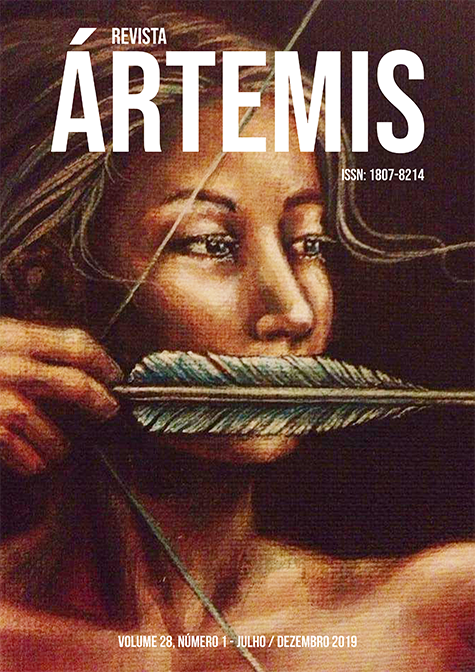Weaving Tricksters: Narrative Multivocalization and Animalization in Louise Erdrich’s The Antelope Wife
DOI:
https://doi.org/10.22478/ufpb.1807-8214.2019v28n1.49883Keywords:
Trickster, Multivocalização Narrativa, Animalização, Narrativas Nativo-Americanas, The Antelope WifeAbstract
This research aims to investigate the trickster category and its agency possibilities in the Native American Louise Erdrich’s novel, The Antelope Wife (1998). We base our epistemes fundamentally on theoretical-philosophical apparatuses that discuss the place of Native Americans and decoloniality, on authors such as: Cunha (2014); Gates Jr. (1988); Vizenor (1990), and Schneider (2001). We perceive different forms of tricksters in the novel that broke power relations, sometimes subverting them, sometimes transgressing them. In The Antelope Wife, storytelling, evidenced in the central narrator’s discourse and focus on various characters, brings a narrative multivocalization that subverts the linear order of narrativity and transgresses the hegemonic discourses of the founding narratives in a metonymic way in the animal-man relationship. . Thus, in different multi-aesthetics, the trickster of the novel converge to establish diverse places of speech and make up a collection produced by counter-hegemonic peoples that are circumscribed in the Americas by native peoples.Downloads
Download data is not yet available.
Downloads
Published
2019-12-17
How to Cite
RIOS SILVA, M. . Weaving Tricksters: Narrative Multivocalization and Animalization in Louise Erdrich’s The Antelope Wife. Revista Ártemis, [S. l.], v. 28, n. 1, p. 52–72, 2019. DOI: 10.22478/ufpb.1807-8214.2019v28n1.49883. Disponível em: https://periodicos.ufpb.br/index.php/artemis/article/view/49883. Acesso em: 4 jul. 2024.
Issue
Section
Literatura indígena, pensamento decolonial e gênero







